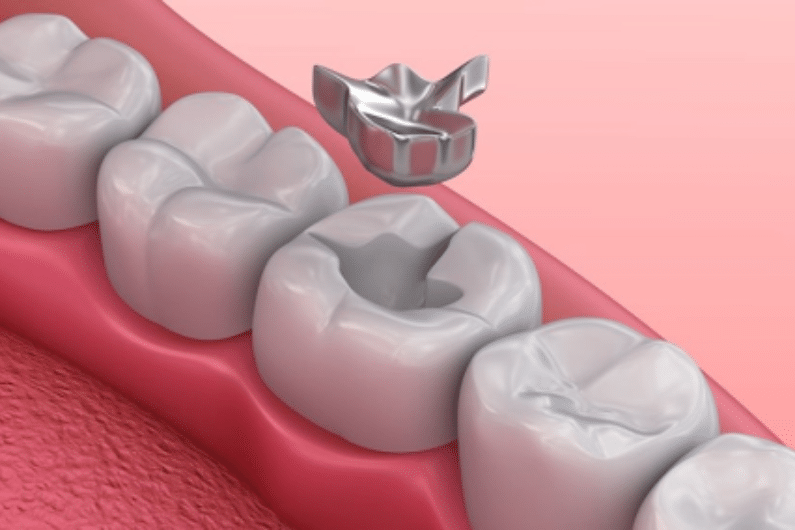Are you considering dental fillings?
If so, you may have heard of mercury fillings, also known as amalgam. Once a popular choice among dentists, these silver-colored fillings have sparked a heated debate about their safety. While they effectively treat cavities, growing concerns about the potential health risks associated with mercury exposure make many parents and patients reconsider their options.
Understanding what mercury fillings are and the implications of using them is crucial. You deserve to know how these fillings may affect your health and the environment. In this blog, we will delve into the risks of mercury fillings and explore safer alternatives. We’ll also guide you on making informed decisions for your dental care.
Let’s uncover the truth about mercury fillings and help you choose the best options for your smile and overall well-being. After all, your dental health is too important to leave to chance!
What Are Mercury Fillings?
Mercury fillings, commonly known as amalgam fillings, have long been a standard solution for treating cavities. These fillings contain a mixture of metals, including approximately 50% elemental mercury, along with silver, tin, and copper. The combination of these materials gives amalgam its strength and durability, making it suitable for use in back teeth where chewing pressure is greatest.
- Durability: Mercury fillings are exceptionally robust and can withstand significant chewing forces.
- Cost-Effective: They often come at a lower cost compared to some modern alternatives.
- Usage: Dentists typically use amalgam in situations where the cavity is large or in areas that endure more wear and tear.
However, as more people become aware of health and environmental issues related to mercury, many are questioning the continued use of amalgam fillings. Understanding the potential risks associated with mercury can help you make informed decisions about your dental care.
Health Risks Associated with Mercury Fillings
The health risks linked to mercury fillings are a growing concern for many people. Mercury is a toxic substance, and exposure can lead to various health issues. While the body can tolerate small amounts of mercury, excessive exposure can result in mercury toxicity.
- Symptoms of Mercury Toxicity: Symptoms can include fatigue, headaches, irritability, and memory problems. In severe cases, exposure can lead to neurological issues.
- Specific Populations at Greater Risk: Certain groups face heightened risks, such as children, whose developing bodies may be more susceptible to mercury’s harmful effects. Pregnant women also face potential risks, as mercury can affect fetal development.
Research indicates that repeated exposure or prolonged exposure to mercury from fillings could contribute to chronic health problems. As such, it’s vital to consider these risks when making dental choices.
Environmental Impact of Mercury Fillings
The environmental implications of using mercury fillings are equally concerning. Dental practices often generate waste containing mercury, which can enter the environment if not disposed of properly.
- Environmental Contamination: Mercury can leach into water systems, contaminating drinking water and harming aquatic life.
- Consequences of Improper Disposal: Many dental practices may not follow proper disposal methods for mercury fillings, leading to serious environmental risks.
In addition to direct exposure through fillings, mercury from dental practices contributes to broader environmental issues. Awareness and proper management are essential to mitigate these impacts. Reducing the use of mercury fillings can help protect both public health and the environment.
Alternatives to Mercury Fillings
Fortunately, there are safer alternatives to mercury fillings that can provide effective solutions for treating cavities. Two popular options include composite resins and glass ionomer materials.
- Composite Resins: These tooth-colored materials blend seamlessly with your natural teeth, making them aesthetically pleasing. They also bond well to the tooth structure, providing additional strength.
- Glass Ionomer: This type of filling releases fluoride, which can help protect the tooth from further decay. It is particularly beneficial for children or individuals at high risk for cavities.
These alternatives not only avoid the risks associated with mercury but also offer aesthetic and functional benefits. Choosing these materials can enhance your dental health and align with a holistic approach to care.
Current Regulations and Recommendations
As concerns about mercury fillings have risen, regulatory bodies have begun to implement guidelines regarding their use. Various organizations provide recommendations for dental practices to follow.
- Regulations: In some regions, health authorities have restricted or banned the use of mercury in dental fillings, particularly for vulnerable populations like children and pregnant women.
- Recommendations from Health Organizations: The World Health Organization and other health agencies advise minimizing mercury exposure and encourage the use of safer alternatives.
Understanding these regulations can empower patients to make informed choices about their dental care and advocate for safer practices within their communities.
Making Informed Choices for Dental Care
Making informed choices about your dental care is crucial for your health and well-being. Understanding the risks associated with mercury fillings and exploring alternative materials can help you make choices that align with your values and health needs.
- Discuss Filling Options with Your Dentist: Open a conversation with your dentist about the materials they use and your concerns regarding mercury.
- Research Alternative Materials: Educate yourself on the benefits of alternatives like composite resins and glass ionomer fillings.
- Ask Questions: Don’t hesitate to ask about the pros and cons of different filling materials, as well as their long-term effects on your health.
Choosing the right dental filling material is essential for your health and well-being. As awareness of the risks associated with mercury fillings grows, more individuals seek safer alternatives. Empower yourself with knowledge about the potential dangers and the eco-friendly options available. Engaging in open discussions with your dentist can lead to informed choices that prioritize both your oral health and the environment. Get a brighter, healthier smile by opting for materials that align with your values!


